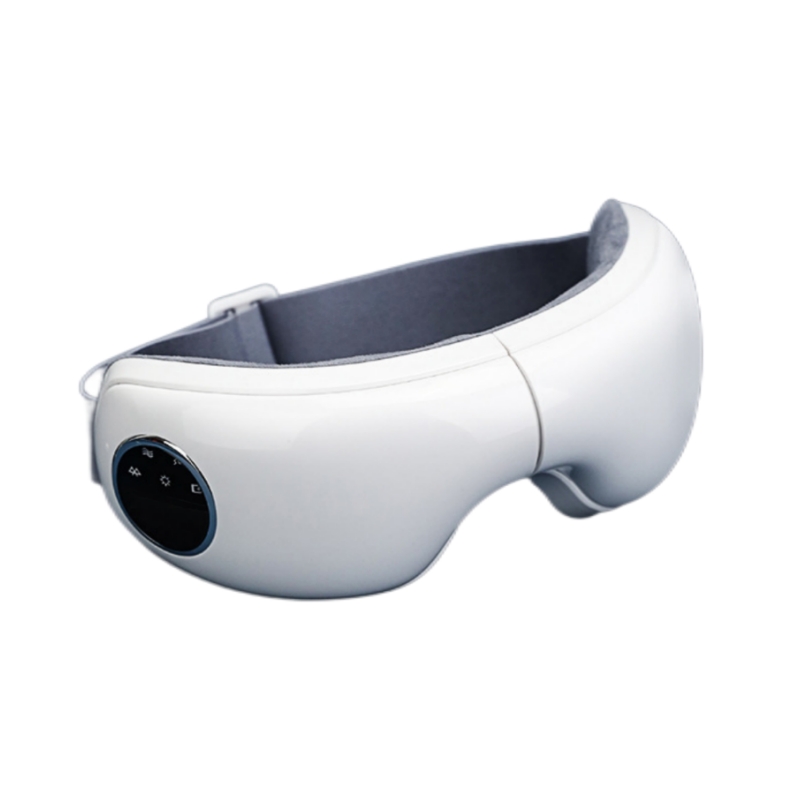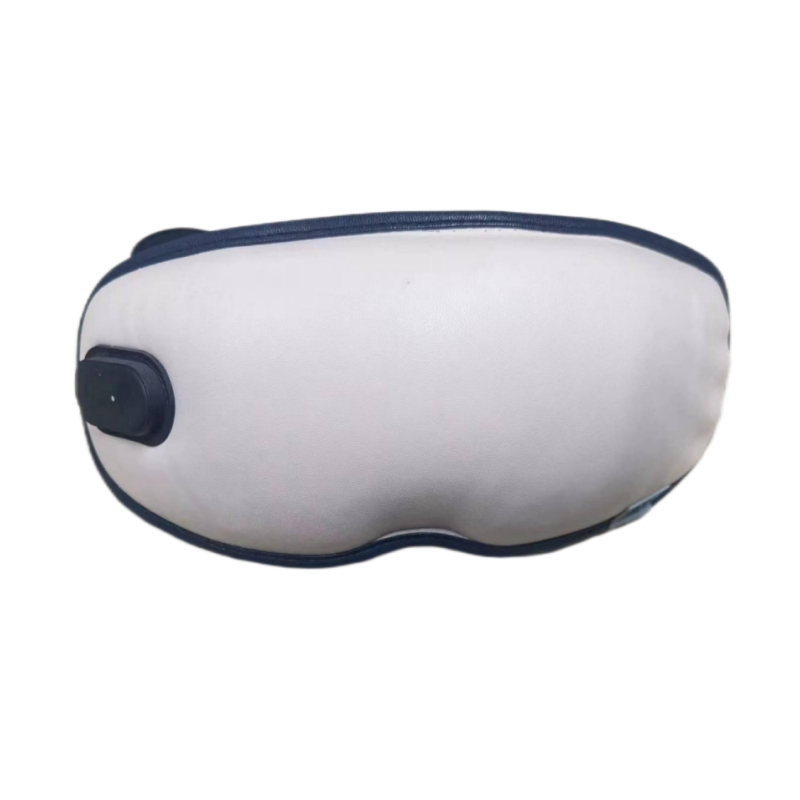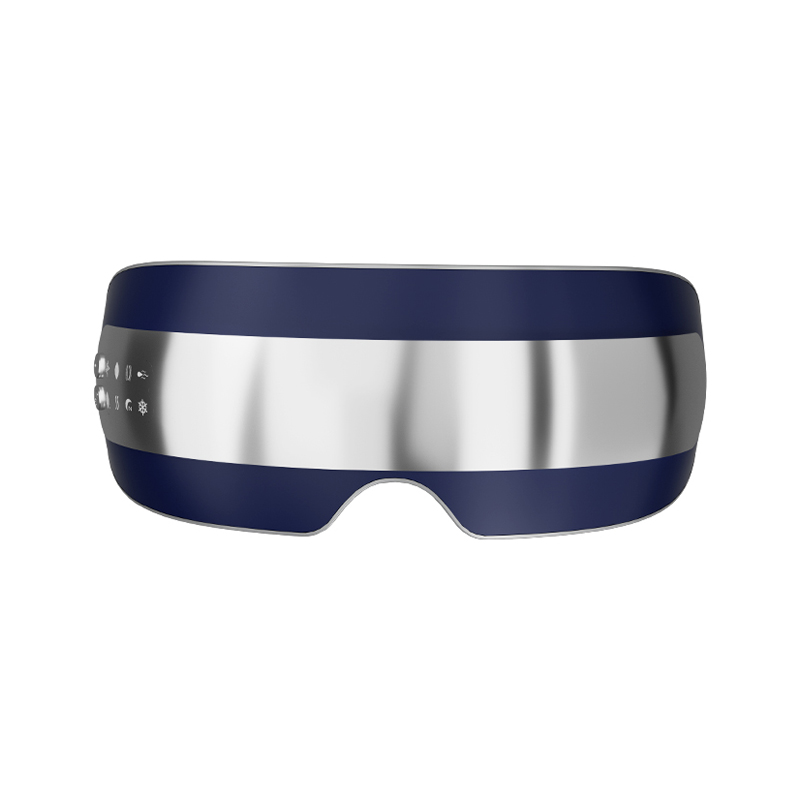How does the sleeping headband improve sleep quality through design?
Release Time : 2025-03-06
The sleeping headband improves sleep quality through a series of clever designs that are designed to improve the user's sleeping environment, promote brain relaxation, and provide personalized sleep assistance.
1. Design that fits the curve of the head
Ergonomic principles: The design of sleeping headbands is usually based on ergonomic principles to ensure that the headband can fit the curve of the head closely and provide stable support. This design not only ensures the comfort of wearing, but also effectively prevents the headband from sliding during sleep, thereby reducing interference with sleep.
Material selection: The skin-friendly part of the headband is made of soft, skin-friendly materials such as silicone and fabric to increase the comfort of wearing. High-quality fabrics also have excellent breathability and moisture absorption, which helps absorb sweat from the head, keep it dry, and further improve the sleep experience.
2. Application of intelligent technology
Brainwave monitoring and analysis: Some advanced sleeping headbands are equipped with sensors that can monitor and analyze the user's brain waves in real time. By reading brain wave data, the headband can understand the user's current sleep state, such as deep sleep, light sleep, etc., so as to provide users with personalized sleep suggestions.
Acoustic stimulation: Some sleeping headbands use acoustic stimulation technology to improve sleep quality. These headbands emit sound waves of a specific frequency to resonate with the user's brain waves, helping users transition from wakefulness to sleep faster. This technology has been proven to significantly shorten the time to fall asleep and improve sleep quality.
Intelligent adjustment: Some headbands also have intelligent adjustment functions, which can automatically adjust the frequency and intensity of acoustic stimulation according to the user's sleep state. This personalized adjustment method ensures that users can get the best auxiliary effect throughout the sleep process.
3. Comfort and convenience
Lightweight design: Sleeping headbands are usually made of lightweight materials to ensure that long-term wearing will not burden the user. The lightweight design makes the headband easier to carry and use, suitable for various sleeping environments.
Easy to operate: The operating interface of the headband is usually simple and clear, and users can start, stop or adjust settings through simple operations. This convenience allows users to easily control their sleep aids and improves the convenience of use.
4. Personalization and customization
Personalized settings: Some sleeping headbands allow users to personalize according to their needs and preferences. For example, users can choose different sound wave stimulation modes, adjust the intensity and time of stimulation, etc. This personalized setting enables the headband to better adapt to the sleep needs of different users.
Customized services: Some headband brands also provide customized services, such as customizing the size of the headband according to the user's head circumference, providing exclusive sleep improvement solutions, etc. This customized service further improves user satisfaction and user experience.
In summary, sleeping headband improves the user's sleep quality through multiple designs such as design that fits the head curve, application of intelligent technology, improvement of comfort and convenience, and personalized and customized services. These design principles and implementation methods make sleeping headband an effective tool for improving sleep disorders and improving the quality of life.
1. Design that fits the curve of the head
Ergonomic principles: The design of sleeping headbands is usually based on ergonomic principles to ensure that the headband can fit the curve of the head closely and provide stable support. This design not only ensures the comfort of wearing, but also effectively prevents the headband from sliding during sleep, thereby reducing interference with sleep.
Material selection: The skin-friendly part of the headband is made of soft, skin-friendly materials such as silicone and fabric to increase the comfort of wearing. High-quality fabrics also have excellent breathability and moisture absorption, which helps absorb sweat from the head, keep it dry, and further improve the sleep experience.
2. Application of intelligent technology
Brainwave monitoring and analysis: Some advanced sleeping headbands are equipped with sensors that can monitor and analyze the user's brain waves in real time. By reading brain wave data, the headband can understand the user's current sleep state, such as deep sleep, light sleep, etc., so as to provide users with personalized sleep suggestions.
Acoustic stimulation: Some sleeping headbands use acoustic stimulation technology to improve sleep quality. These headbands emit sound waves of a specific frequency to resonate with the user's brain waves, helping users transition from wakefulness to sleep faster. This technology has been proven to significantly shorten the time to fall asleep and improve sleep quality.
Intelligent adjustment: Some headbands also have intelligent adjustment functions, which can automatically adjust the frequency and intensity of acoustic stimulation according to the user's sleep state. This personalized adjustment method ensures that users can get the best auxiliary effect throughout the sleep process.
3. Comfort and convenience
Lightweight design: Sleeping headbands are usually made of lightweight materials to ensure that long-term wearing will not burden the user. The lightweight design makes the headband easier to carry and use, suitable for various sleeping environments.
Easy to operate: The operating interface of the headband is usually simple and clear, and users can start, stop or adjust settings through simple operations. This convenience allows users to easily control their sleep aids and improves the convenience of use.
4. Personalization and customization
Personalized settings: Some sleeping headbands allow users to personalize according to their needs and preferences. For example, users can choose different sound wave stimulation modes, adjust the intensity and time of stimulation, etc. This personalized setting enables the headband to better adapt to the sleep needs of different users.
Customized services: Some headband brands also provide customized services, such as customizing the size of the headband according to the user's head circumference, providing exclusive sleep improvement solutions, etc. This customized service further improves user satisfaction and user experience.
In summary, sleeping headband improves the user's sleep quality through multiple designs such as design that fits the head curve, application of intelligent technology, improvement of comfort and convenience, and personalized and customized services. These design principles and implementation methods make sleeping headband an effective tool for improving sleep disorders and improving the quality of life.







